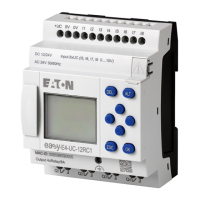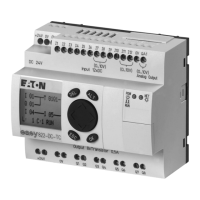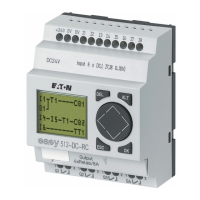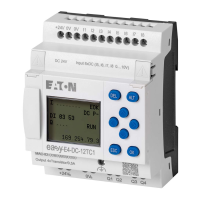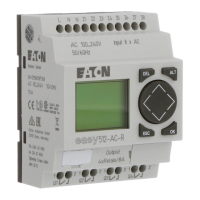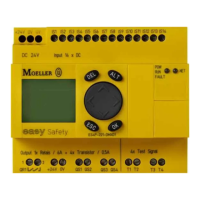6. Function blocks
6.1 Manufacturer function blocks
6.1.4.3 PO - Pulse output
General
The DC versions of easyE4 base devices provide 2 pulse output function
blocks, PO01 through PO02. These function blocks make it possibly to
quickly output 24 V pulses in order to drive stepper motors. Pulse output
PO01 is hardwired to device output Q1 and PO02 to device output Q2.
Only easyE4 transistor versions support PO pulse output
function blocks.
If you use a PO function block with its hardwired device out-
put Q1 or Q2, do not not assign that device output again in
the program. Doing so will not have any effect, as a state
change by the function block has a higher priority.
WARNING
UNFORESEEABLE SWITCHING STATES AT OUTPUT
When using the PO function block, strictly observe the sep-
arate assignment of the outputs if other hardware-depend-
ent function blocks are used, such as the PW function
block.
If this is not observed, unforeseeable switching states may occur at the
output concerned.
386
easyE402/24 MN050009ENEaton.com
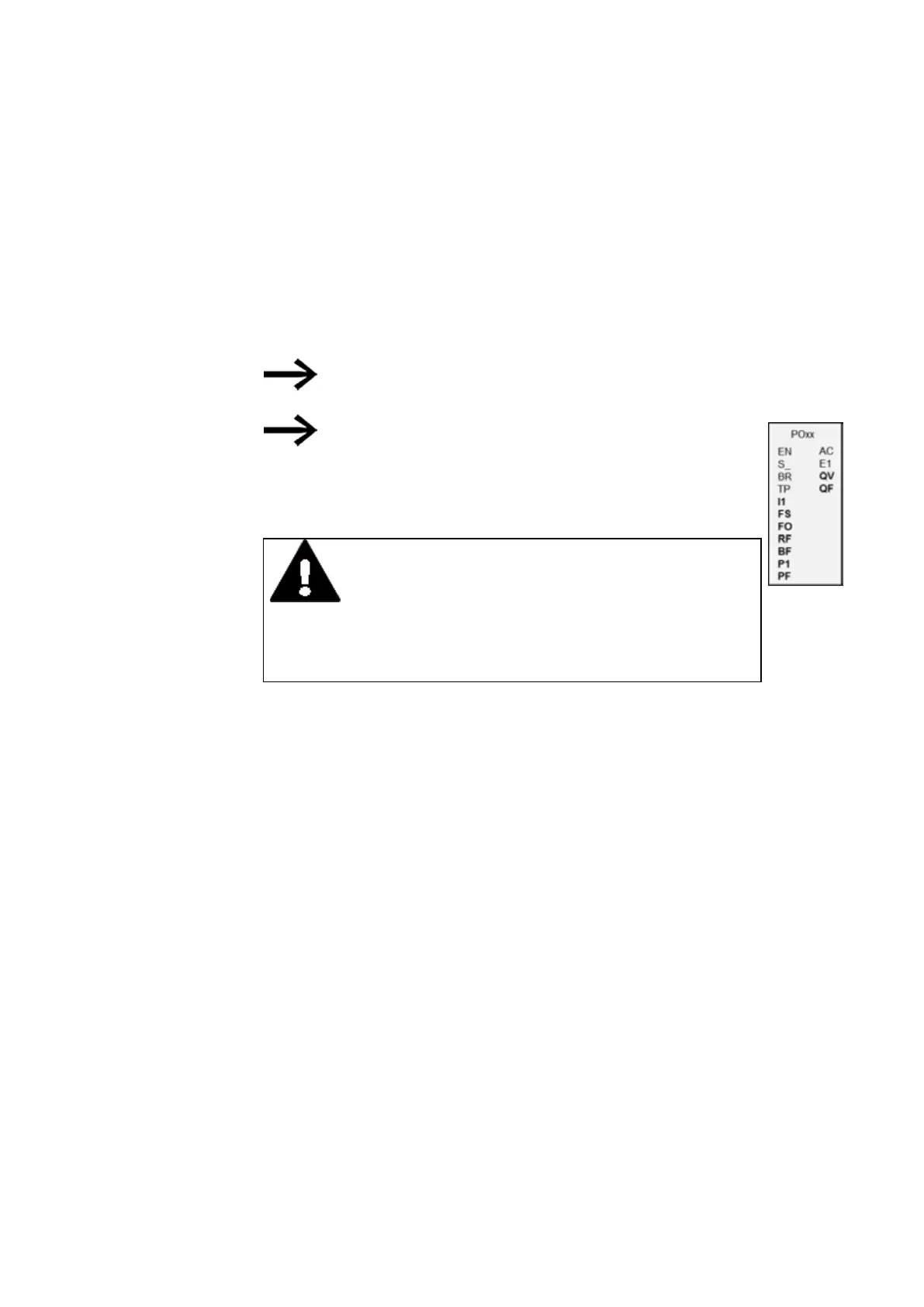